Today, waveriding is no longer just Bottom turns and Cut backs, up and down the waves. By now, even among the waves, we see rather complicated maneuvers and movements, partly borrowed from freestyle, and waveriding is becoming a much more varied discipline. It is useful, then, to make some order among the main maneuvers.
Windsurfing: waveriding maneuvers catalogue
After the good success among our readers of the article on freestyle maneuvers, we decided to write a similar one, related to the waveriding maneuvers. In this case too, we begin to classify and briefly describe the main maneuvers. It must be clear that the intention of this article is to provide a list, with a brief description of the maneuver, to understand the main steps, and to recognize it.
We would like, however, you to give us a helping hand. Whether you are a professional athlete, a very good rider, or mid-level amateur windsurfer, we ask you to tell us a maneuver that you like, that you know how to perform, or that you are learning, sending us a brief description, with at least one picture of you in action, as well as your own video while you play it. Given the good follow-up which Waterwind now is enjoyng, in Italy and around the world, it will also be a good opportunity for you to get noticed in the web, and to do something useful for the whole windsurfer community.
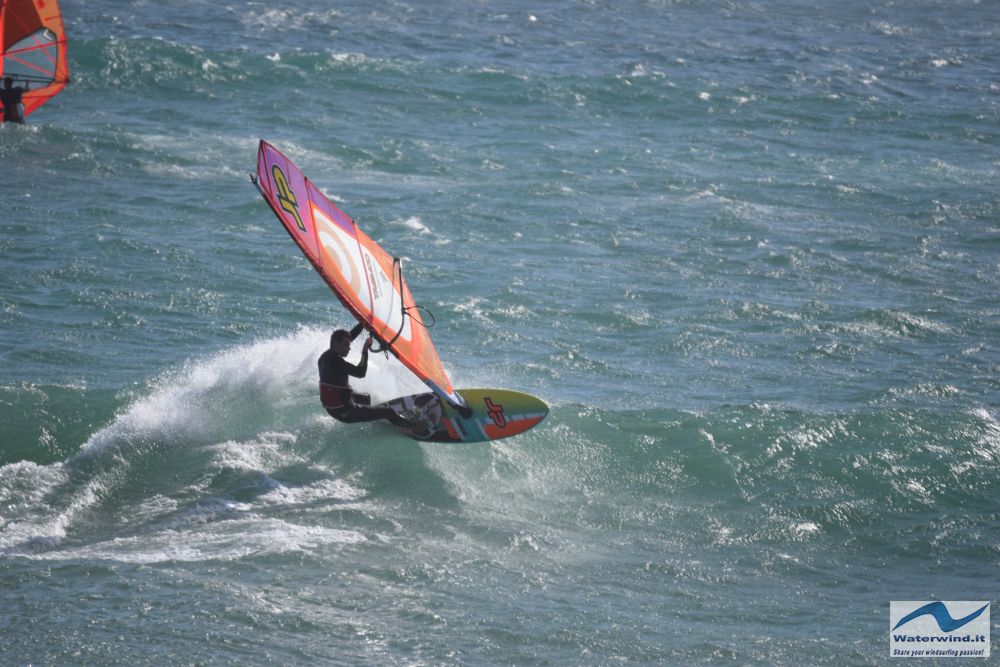
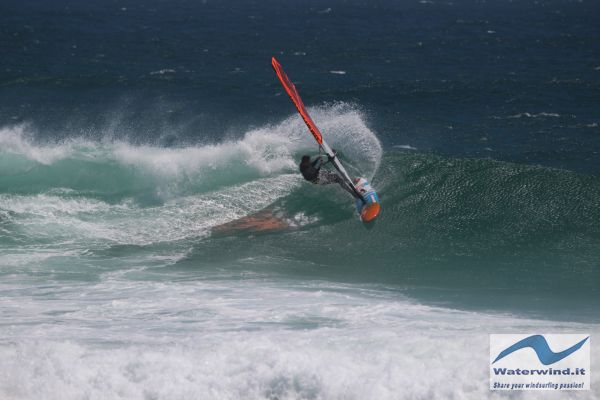
The article is a work in progress, and will be further updated / enriched. If you have suggestions / corrections, or thoughts to make, please post them in the comments at the end of the article. If the maneuver that you know how to do, is already included among the cataloged ones, post your photo, or a video, while you are doing it, in the comments area below!
Before going on reading, we advise you to study some basic concepts of waveriding that we have discussed in the article specifically dedicated to this discipline.
Maneuvers treated so far: Frontside bottom turn, Frontside cut back, Aerial, Gu Screw, Wave 360, Goiter, Taka, Front Loop, Back Loop, Push Loop.
Frontside bottom turn
The bottom turn is the first fundamental waveriding maneuver. It is an obligatory maneuver to learn to begin to descend and ride the waves. Assuming you know what Front Side means (otherwise, read the general article above highlighted), the Bottom turn front side (a sort of half jibe) requires that the rider starts to go down the wave, sailing upwind of the wave pocket. Without removing the foot from the rear strap, he/she starts to bear away, in a similar way as in the Power jibe, carving with the leeward rail that bites the water well, and keeping the body advanced, and almost over the sail (which is more or less laid down). The key to this maneuver is speed, which must be such that it can allow the rider to go up the wave face. In fact, the bottom turn closes when the rider redirects the board towards the crest of the wave, opening the sail, sometimes with a switch stance.
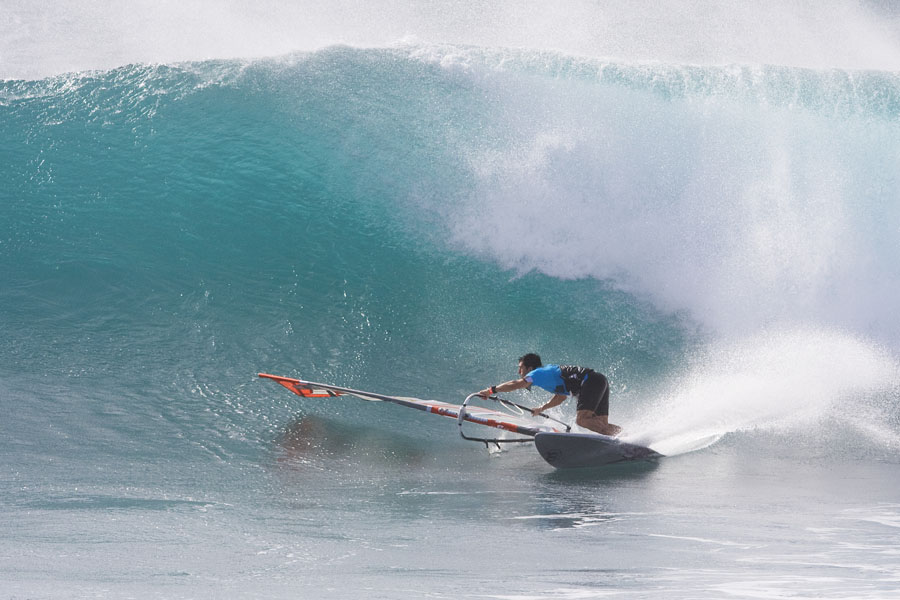
Frontside cut back
The Cut back (or Top Turn) is the basic maneuver that closes the surf on the wave, and if the two maneuvers are performed at their best, they should join in a single fluid movement without interruption. The rider, arriving with good speed at the end of the bottom turn, points towards the wave crest, as mentioned, opening the sail and sometimes with a switch stance. Depending on the wave steepness and on the possessed speed, in correspondence with the crest, or just below it, the rider changes direction sharply (sometimes very abruptly, sliding the board tail); so, he/she returns to sail upwind, to go down the wave, and possibly (if the wave allows it and does not break too soon), set a new Bottom Turn. Simultaneously with the change of direction on the crest, the rider again sheets in the sail, crouches, and brings the weight of the body back to the upwind board edge. If you want to train at home, or on the beach, doing some useful exercises to improve your skills in frontside bottom turns and cut backs, we really recommend you to watch this precious video tutorial by Getwindsurfing.

Aerial
With the Aerial, the game starts to get even funnier ... The first part is similar to the entry in the Cut back, but, unlike that, in the Aerial the rider tends to go up again more vertical on the wave face, and look for the wave crest (lip); when it reaches it, it exploits the thrust of the wave that is about to break, to be projected into the air and forward in front of the wave. Therefore, he pushes on the board with the rear leg, detaches from the crest, as in a chop hop, to then hover in the air in front of the wave face and land in its trough (or still on its face). Timing, on the wave lip, is essential. The beauty of this maneuver is greater, the more is the spray (spray) produced by the board when it detaches from the crest, and the longer is the flight phase. The rider then picks up speed again and can launch into a new Bottom Turn.
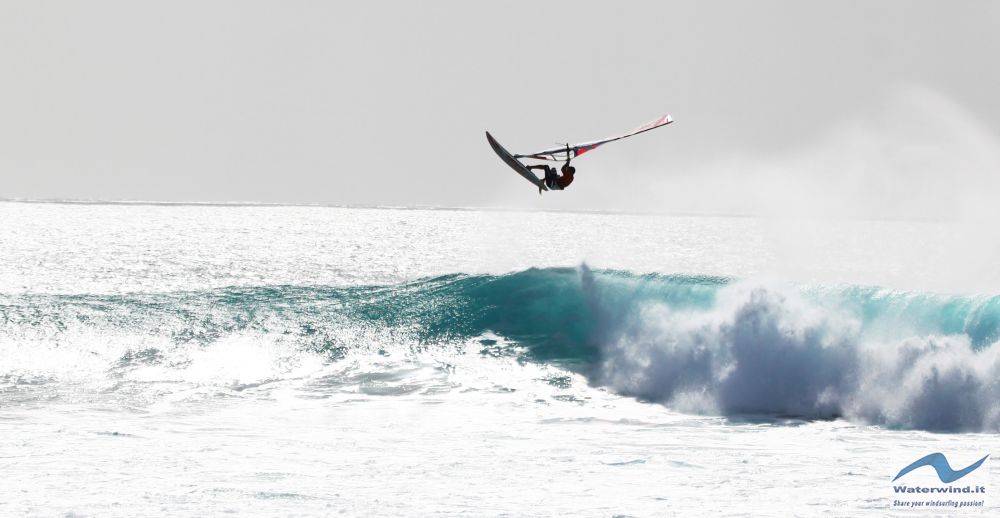
Gu screw
And, here, the most complicated and radical maneuvers of modern waveriding begin ... The Gu Screw is a sort of 360 on the wave. It starts with a very radical bottom turn, in which the rider gains a lot of speed to climb, very vertically, the steep wave face. While sailing up the wave face, the switch stance is taken to the extreme, and the sail is opened a lot, keeping the clew first, and completely in the wind. When the board is completely vertical on the wave face, and just before detaching from its crest, the rider pushes decisively against the board with his/her back foot tip to get an extreme carving, and to return to descend the wave, and sail with the same tack he/she had before performing the Bottom Turn. Immediately after, he/she jumps on the wave crest, continuing in the air the rotation started in the water. At this point, the board rises high in the sky, remaining upwind of the rider, while the sail completes the rotation by being taken downwind (and the rider remains under it, in flight). The landing and closing of the maneuver take place behind the wave crest (not like in the Wave 360, in which landing takes place on the same wave face, with the windsurfer continuing to ride it), as Antoine Martin masterfully does in this video.
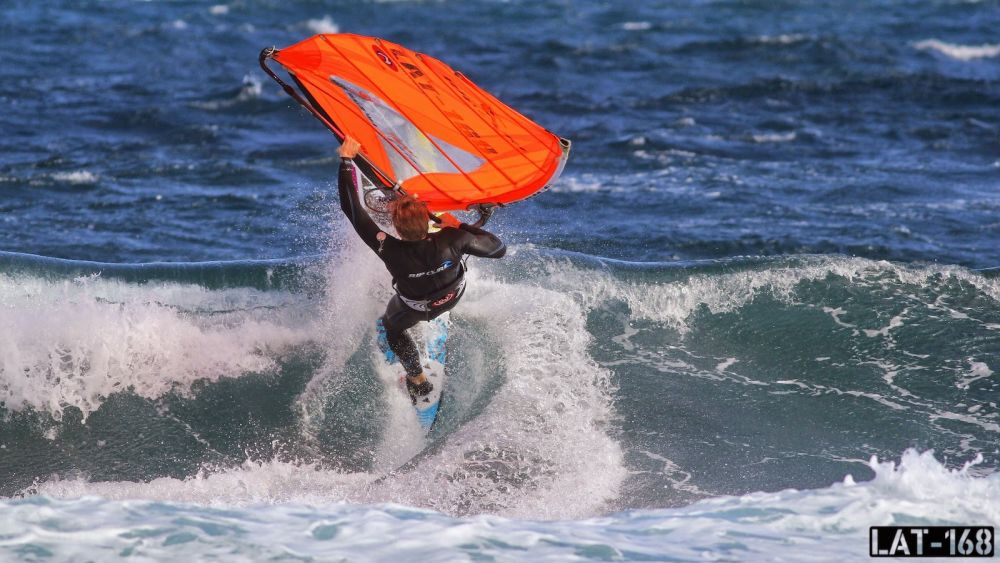
Central part omitted. The reading of the main part of this article is reserved to Waterwind Supporters. To become a Supporter, click here.
Push loop
The Push Loop is a variant of the Back Loop. It is a maneuver that, if performed well, is aesthetically very beautiful to watch at, and denotes great equipment control in the air by the rider. Unlike the back loop, in the central phase of the rotation, when the rider is upside down, he/she brings the rig under him/her with determination and speed (while the board is still up, or at the same height as the surfer, the rider is "leaning" on the rig that passes on a sub-horizontal plane). The mast is then quickly brought to the wind, that is, in the rider's sailing direction before starting the maneuver, and then again upwards and on a vertical plane. Also the board, in turn, completes the rotation, and lands on the water, with the bow facing again in the direction of initial navigation. Below, we propose a slow motion video, shot by us at Coudouliere, in which the strong and young French rider Loick Lesauvage performs the maneuver. In the next video, Colin Dixon explains the execution.
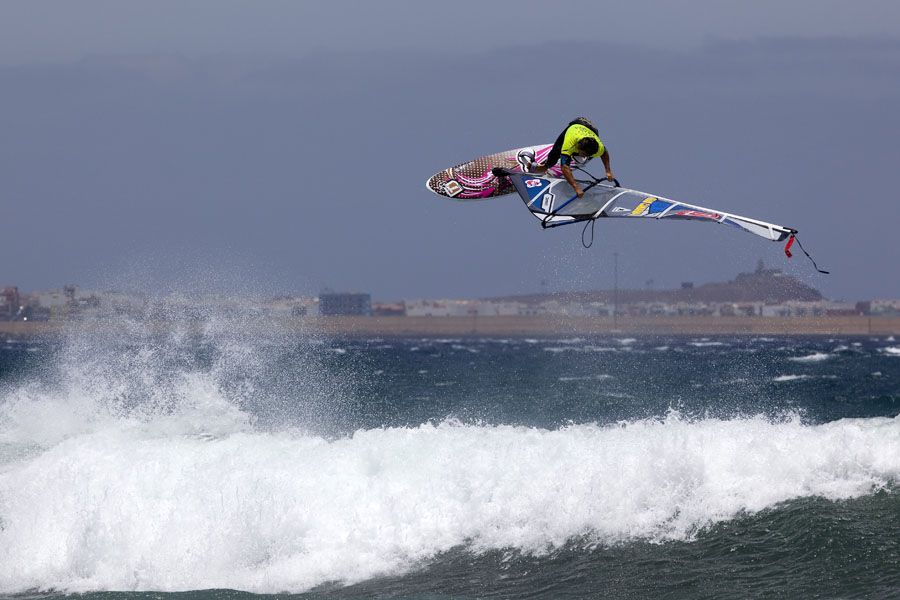
Hang Loose. Fabio
Without your Support, Waterwind wouldn't exist. Become our supporter!
If you want to advertise with us, read here, or contact us.
Collaborate with us. Read here!
Buy our Gadgets! Visit our YouTube channel!




